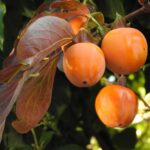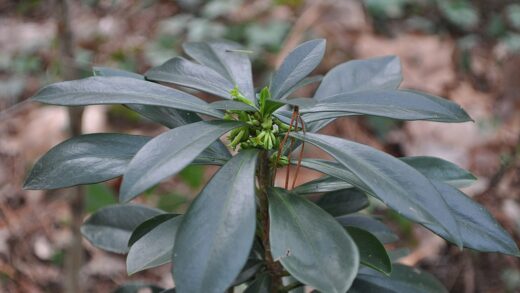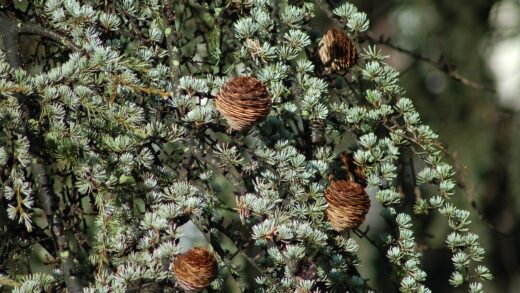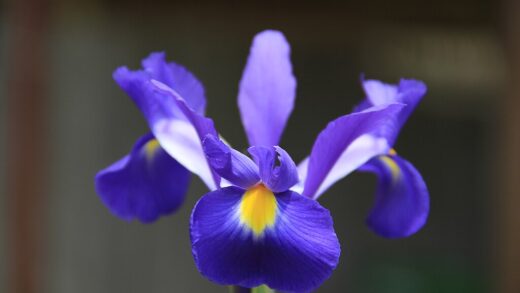The successful cultivation of Jerusalem artichokes begins with proper planting and an understanding of its straightforward propagation methods. This resilient plant is propagated vegetatively, meaning it is grown from its tubers rather than from seeds, which ensures that the resulting plants are genetically identical to the parent. The key to establishing a thriving patch lies in selecting high-quality seed tubers and planting them at the correct time and in a well-prepared location. Unlike many other garden vegetables, Jerusalem artichokes are exceptionally vigorous, so the initial planting strategy should also consider long-term management and containment to prevent them from overtaking the garden space.
Timing the planting correctly is crucial for giving the tubers the best possible start and ensuring a long growing season for maximum yield. The ideal planting window is in the early spring, as soon as the soil is workable and the threat of hard frost has passed, which is typically around the same time you would plant early potatoes. Planting in the spring allows the tubers to establish a strong root system before the heat of summer arrives. Alternatively, tubers can also be planted in the autumn in milder climates, which can give them a head start on the following season’s growth. Regardless of the season, the chosen planting site should receive full sun and have well-drained soil to prevent the tubers from rotting.
The quality of the seed tubers used for planting has a direct impact on the health and vigor of the resulting crop. It is best to select small to medium-sized tubers that are firm, smooth, and free from any signs of disease, rot, or damage. Each tuber should have at least two or three visible “eyes” or buds, as these are the points from which the new shoots will emerge. If you are using larger tubers, they can be cut into smaller pieces, much like seed potatoes, ensuring that each piece has a few eyes. It is advisable to allow the cut surfaces to dry and callous over for a day or two before planting to reduce the risk of soil-borne diseases entering the tuber.
Propagation is an almost effortless aspect of growing Jerusalem artichokes, as the plant is naturally inclined to multiply. The primary method of propagation is simply by division of the tuber clump. At harvest time, the smaller, healthier tubers can be set aside specifically for replanting. Because it is nearly impossible to find every single tuber during harvest, most gardeners find that the patch propagates itself quite effectively, with new shoots emerging in the spring from tubers that were missed. For this reason, the initial planting is often the only one required, with subsequent years focused on managing the existing patch by thinning out shoots and harvesting thoroughly to control its size.
Selecting the ideal planting location
Choosing the right location for your Jerusalem artichoke patch is one of the most important decisions you will make in their cultivation, with long-term implications for your garden’s layout. The primary consideration is sunlight; these plants are native to prairie environments and perform best in a location that receives at least six to eight hours of direct sunlight per day. While they can tolerate some partial shade, full sun exposure promotes stronger, sturdier stalks and, most importantly, leads to a significantly larger yield of tubers. Insufficient light will result in leggy, weak plants that are more susceptible to being knocked over by wind.
More articles on this topic
Soil conditions in the chosen location are another critical factor for success. Jerusalem artichokes are adaptable and can grow in a variety of soil types, from sandy to clay, but they have a clear preference for a loose, well-drained, fertile loam. Heavy, waterlogged clay soils should be avoided as they can lead to poor tuber development and increase the risk of rot. Before planting, it is highly beneficial to amend the soil with a generous amount of organic matter, such as compost or well-rotted manure. This improves soil structure, enhances drainage in heavy soils, and increases water retention in sandy soils, creating the ideal friable texture for tubers to expand freely.
Given the plant’s impressive height, which can easily exceed two or even three meters, strategic placement is necessary to avoid casting unwanted shade on other sun-loving plants in your garden. For this reason, it is often recommended to plant them along the northern edge of a garden plot, where their tall stature will not block the sun from lower-growing crops. Their height can also be used to an advantage, as a dense stand of Jerusalem artichokes can serve as an effective seasonal windbreak or a living privacy screen for a patio or seating area during the summer and autumn months.
Finally, and perhaps most crucially, the selected location must take into account the plant’s aggressive, spreading nature. Jerusalem artichokes spread via their underground tubers and can quickly become invasive if not contained. It is wise to choose a dedicated, permanent bed for them, preferably one that is isolated from other garden areas. Consider installing a physical root barrier around the perimeter of the bed, buried at least 30-40 centimeters deep, to prevent the rhizomes from escaping. Choosing a spot where you are content for them to grow for many years will save significant effort in controlling their spread in the future.
Preparing tubers for planting
The preparation of Jerusalem artichoke tubers before they go into the ground is a simple but vital step that sets the stage for a healthy and productive crop. The process begins with the careful selection of your “seed” tubers. You should choose tubers that are firm to the touch, without any soft spots, blemishes, or signs of mold or rot. While any size tuber will grow, small, whole tubers about the size of an egg are often ideal for planting as they are easy to handle and require no cutting. Using healthy stock is the first line of defense against introducing diseases into your new patch.
More articles on this topic
For those who have large tubers, or a limited supply, cutting them into smaller pieces is a common and effective practice to increase the number of plants. This is very similar to preparing seed potatoes. Examine the large tuber and identify the “eyes” or growth nodes, which will appear as small bumps or indentations on the surface. Using a clean, sharp knife, cut the tuber into sections, ensuring that each piece is at least 5 centimeters in size and has a minimum of two or three eyes. This ensures that each section has sufficient stored energy and growing points to produce a vigorous new plant.
After cutting the tubers, it is highly recommended to allow the cut surfaces to cure or “chit” for a day or two before planting. Simply lay the pieces out in a single layer in a dry, well-ventilated area that is protected from direct sunlight. During this time, the cut surfaces will dry and form a protective callus. This calloused layer acts as a natural barrier, sealing the wound and significantly reducing the risk of soil-borne fungi and bacteria entering the tuber and causing it to rot after planting. This small, patient step can dramatically increase the success rate of your planting.
Before planting, it is not necessary to wash the tubers, as the thin layer of soil can offer some protection. There is also no need for any special chemical treatments; the Jerusalem artichoke is a naturally resilient plant. The primary focus of preparation is simply to ensure you are planting viable, healthy material and have taken the simple precaution of curing any cut surfaces. Once your selected whole tubers or cured pieces are ready, they can be taken directly to the prepared garden bed for planting, confident that you have given them the best possible start for the growing season ahead.
The planting process
The physical act of planting Jerusalem artichoke tubers is a straightforward process, but following a few key guidelines on depth and spacing will ensure the plants have the room they need to thrive. After preparing the soil in your chosen location, the next step is to create furrows or individual planting holes. The generally accepted rule for planting depth is between 10 and 15 centimeters. Planting too shallowly can result in the tubers being exposed to the sun or being dislodged, while planting too deeply can delay the emergence of the shoots and may hinder tuber formation. A moderate depth of about 12 centimeters is a reliable target for most soil types.
Proper spacing between tubers is critical to prevent overcrowding, which can lead to competition for light, water, and nutrients, ultimately resulting in smaller tubers and weaker plants. Plant the individual tubers or cut pieces approximately 30 to 45 centimeters apart within the row. This spacing gives each plant adequate room to develop a robust root system and a full canopy of leaves without excessively shading its neighbors. If you are planting multiple rows, the rows themselves should be spaced at least 60 to 90 centimeters apart. This wider spacing between rows ensures good air circulation, which can help prevent fungal diseases, and provides ample room to walk and perform tasks like hilling and harvesting.
Once the holes or furrows are ready, place one seed tuber or tuber piece in each designated spot. It is not critical which way the tuber is oriented, as the shoots will naturally find their way up towards the sun. However, if there is a side with a concentration of visible eyes or small sprouts, placing this side facing upwards can give the plant a slight head start. After placing the tubers, gently cover them with soil, being careful not to compact it too much. The loose soil cover will make it easier for the tender new shoots to break through the surface as they begin to grow.
After the entire area has been planted, the final step is to water the bed thoroughly. This initial watering helps to settle the soil around the tubers, eliminating any air pockets and ensuring good contact between the tuber and the soil. This contact is essential for initiating root growth. For the next few weeks, the soil should be kept consistently moist, but not waterlogged, to support the sprouting process. Shoots will typically begin to emerge from the soil within two to three weeks, depending on the soil temperature and weather conditions.
Long-term propagation and management
The propagation of Jerusalem artichokes in subsequent years is a matter of management rather than active replanting, thanks to the plant’s persistent and self-propagating nature. After the first year’s harvest, it is virtually guaranteed that some tubers, or even small fragments of tubers, will have been missed and remain in the soil. These leftover tubers will sprout vigorously the following spring, ensuring a continuous crop without any need to purchase or set aside new seed stock. The challenge, therefore, shifts from propagation to the control and thinning of the volunteer plants to maintain a healthy and productive patch.
As the new shoots emerge in the spring, it is important to assess their density. If the plants are allowed to grow too close together, they will become overcrowded, leading to intense competition that results in thin, weak stalks and a disappointing yield of small tubers. To prevent this, thinning is a crucial management task. Once the shoots are about 15 centimeters tall, selectively remove the weaker or more poorly spaced shoots, aiming for a final spacing of approximately 30 to 45 centimeters between plants. This thinning process ensures that the remaining plants have the resources they need to reach their full potential.
Over time, an unmanaged Jerusalem artichoke patch can deplete the soil of essential nutrients, leading to a decline in vigor and yield. To maintain a productive patch year after year, it is vital to replenish the soil’s fertility annually. Each autumn, after cutting down the stalks, apply a generous layer of compost or well-rotted manure over the entire bed. This top-dressing will break down over the winter, enriching the soil and providing the necessary nutrients for the following season’s growth. This simple act of feeding the soil is a key component of sustainable, long-term propagation.
For gardeners who desire more control or wish to rotate their crops, an alternative long-term strategy involves harvesting the entire patch as thoroughly as possible each autumn. The best tubers are then selected and stored over winter in a cool, dark place, packed in damp sand or peat. In the spring, a new bed can be prepared in a different location, and the stored tubers are planted to start a fresh patch. This method prevents the buildup of soil-borne diseases, allows for effective crop rotation, and provides complete control over the plant’s location, effectively managing its invasive tendencies while still ensuring a yearly harvest.















